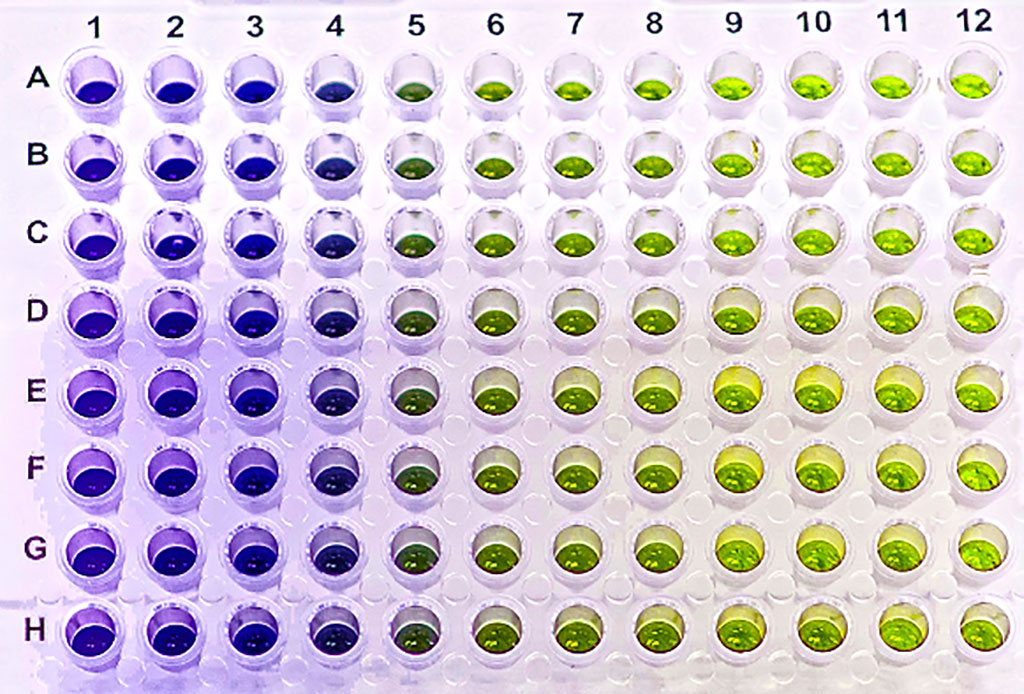Melatonin Levels in Parkinson’s Patients Linked to Non-Motor Symptoms
By LabMedica International staff writers
Posted on 21 Jul 2020
Parkinson’s disease (PD) is a complex neurodegenerative disease characterized by the loss of dopaminergic neurons in the pars compacta (SNpc), resulting in the classic motor manifestations in PD patients. The clinical diagnosis of PD mainly relies on the presence of motor symptoms as the disease progresses.Posted on 21 Jul 2020
Melatonin is a hormone produced by the pineal gland, a small pea-shaped gland in the brain that regulates sleep. Higher levels of this hormone are usually present at night. In addition to its main role in regulating the circadian rhythm, melatonin also controls the production of other hormones, helps regulate the body’s internal temperature, and influences cognitive performance and mood.

Image: An enzyme-linked immunosorbent assay (ELISA) was used to measure melatonin which was significantly higher in Parkinson’s disease patients (Photo courtesy of Gold Biotechnology).
Neurologists at the Henan Provincial People’s Hospital (Zhengzhou, China) explored the possible relationship between melatonin levels and non-motor symptoms of Parkinson’s, and measured the levels of melatonin circulating in the blood of 61 patients with Parkinson’s (average age 62.4 years) and 58 age and sex-matched healthy individuals (controls). Within the Parkinson’s group, 14 patients had cardiovascular symptoms (23%), 42 had gastrointestinal dysfunction (68.9%) and 51 had sleep disorders (83.6%).
Blood samples were collected in the dark, or under a dim light, following a 12-hour overnight fasting period in all study participants. Melatonin levels were determined by enzyme-linked immunosorbent assay (ELISA, Shanghai Blue Gene Biotech, Co. Ltd., Shanghai, China), which has the following characteristics: sensitivity, 1.0 pg/mL; intra-assay coefficient of variation, < 9%; and interassay variation coefficient of variation, < 10%. All samples were analyzed in triplicate and averaged.
The scientists reported that compared with the healthy controls, the plasma melatonin levels were significantly higher in PD patients (12.82 ± 4.85 versus 19.40 ± 4.23). Higher plasma melatonin concentrations were detected in the negative cardiovascular symptom group than in the cardiovascular symptom group and higher plasma melatonin concentrations were detected in the non-sleep-disorders group than in the sleep disorders group. In addition, the plasma melatonin concentration was higher in the group without gastrointestinal dysfunction than in the gastrointestinal dysfunction group.
The authors concluded that the plasma melatonin levels in PD patients were significantly higher than those in healthy controls. Non-motor symptoms that were significantly negatively correlated with plasma melatonin levels were cardiovascular symptoms, sleep disorders, and gastrointestinal dysfunction. Plasma melatonin levels have the closest relationship with sleep disorders. There was a correlation between plasma melatonin levels and sleep quality in patients with PD. The remaining non-motor symptoms were not related to plasma melatonin levels. The study was originally published online on May 19, 2020 in the journal Frontiers in Neuroscience.
Related Links:
Henan Provincial People’s Hospital
Shanghai Blue Gene Biotech














